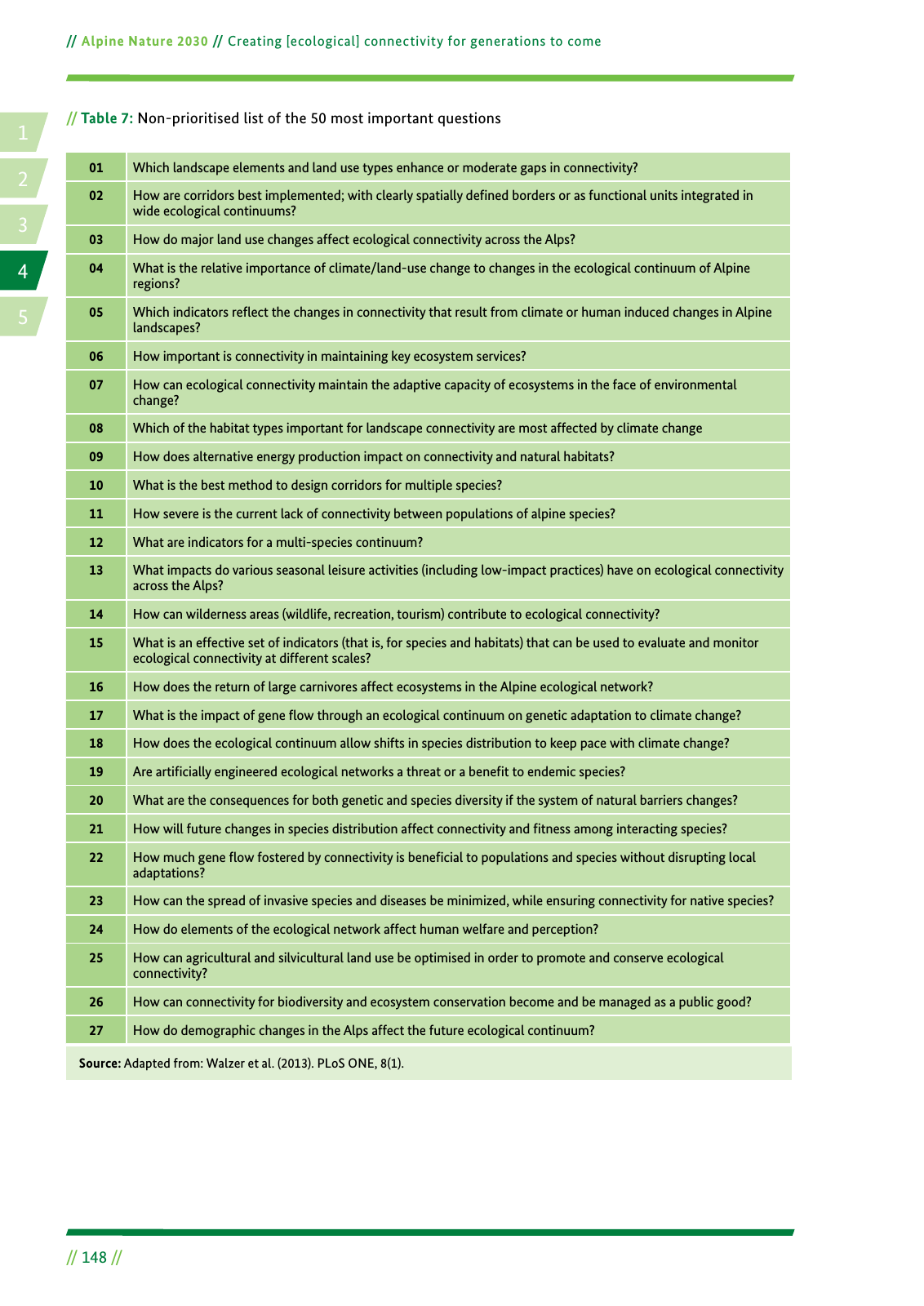14 2 5 3 Alpine Nature 2030 Creating ecological connectivity for generations to come 148 01 Which landscape elements and land use types enhance or moderate gaps in connectivity 02 How are corridors best implemented with clearly spatially de ned borders or as functional units integrated in wide ecological continuums 03 How do major land use changes affect ecological connectivity across the Alps 04 What is the relative importance of climate land use change to changes in the ecological continuum of Alpine regions 05 Which indicators re ect the changes in connectivity that result from climate or human induced changes in Alpine landscapes 06 How important is connectivity in maintaining key ecosystem services 07 How can ecological connectivity maintain the adaptive capacity of ecosystems in the face of environmental change 08 Which of the habitat types important for landscape connectivity are most affected by climate change 09 How does alternative energy production impact on connectivity and natural habitats 10 What is the best method to design corridors for multiple species 11 How severe is the current lack of connectivity between populations of alpine species 12 What are indicators for a multi species continuum 13 What impacts do various seasonal leisure activities including low impact practices have on ecological connectivity across the Alps 14 How can wilderness areas wildlife recreation tourism contribute to ecological connectivity 15 What is an effective set of indicators that is for species and habitats that can be used to evaluate and monitor ecological connectivity at different scales 16 How does the return of large carnivores affect ecosystems in the Alpine ecological network 17 What is the impact of gene ow through an ecological continuum on genetic adaptation to climate change 18 How does the ecological continuum allow shifts in species distribution to keep pace with climate change 19 Are arti cially engineered ecological networks a threat or a bene t to endemic species 20 What are the consequences for both genetic and species diversity if the system of natural barriers changes 21 How will future changes in species distribution affect connectivity and tness among interacting species 22 How much gene ow fostered by connectivity is bene cial to populations and species without disrupting local adaptations 23 How can the spread of invasive species and diseases be minimized while ensuring connectivity for native species 24 How do elements of the ecological network affect human welfare and perception 25 How can agricultural and silvicultural land use be optimised in order to promote and conserve ecological connectivity 26 How can connectivity for biodiversity and ecosystem conservation become and be managed as a public good 27 How do demographic changes in the Alps affect the future ecological continuum Table 7 Non prioritised list of the 50 most important questions Source Adapted from Walzer et al 2013 PLoS ONE 8 1

Hinweis: Dies ist eine maschinenlesbare No-Flash Ansicht.
Klicken Sie hier um zur Online-Version zu gelangen.
Klicken Sie hier um zur Online-Version zu gelangen.